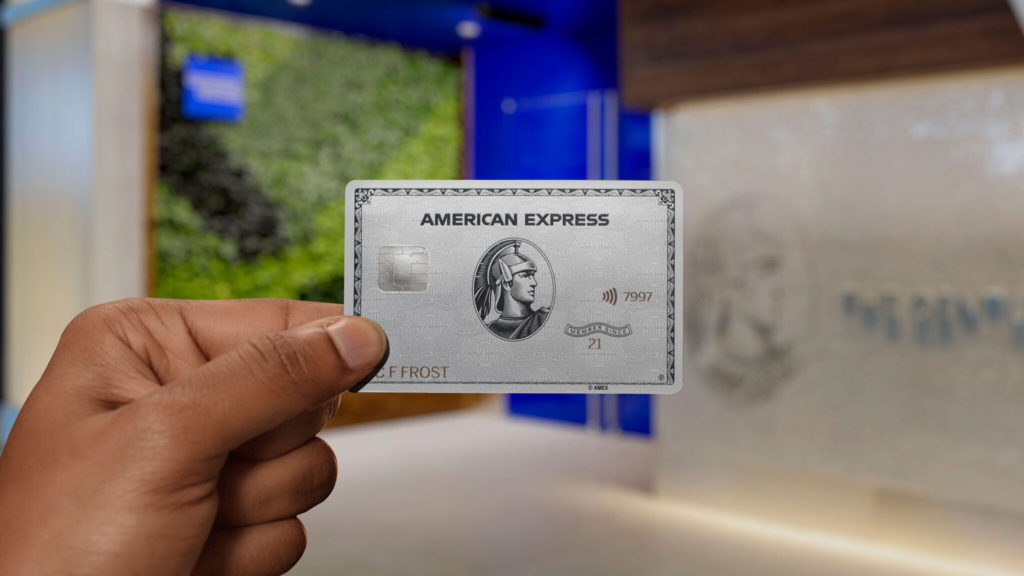Is Chase’s Sapphire Reserve Card Due for a Refresh?
9 min readAt the end of 2016, Chase took the travel world by storm by launching a brand new premium travel credit card called the *chase sapphire reserve* – building off of the success of one of the most popular travel cards out there – *chase sapphire preferred*.
The Sapphire Reserve launched with a huge welcome offer bonus of 100,000 Chase Ultimate Rewards points (a bonus that Chase has said is unlikely to ever return) and a $450 annual fee – at the time cementing itself as the only real competitor to *amex platinum* who had long owned the premium travel card market.
The card was an immediate hit, and it was so popular at launch that Chase actually ran out of the metal they were using to produce the physical cards. Chase later indicated that the launch of the Reserve cost the bank hundreds of millions of dollars. So sure enough, just a few short years later in early 2020, Chase added a few new benefits to the card and hiked the annual fee on the Sapphire Reserve up to $550 where it currently sits today.
Four years later, the card hasn’t changed much – and for lack of a better word, it is starting to feel … stale. Chase faces much more competition in the premium travel card space than they did eight years ago, so it’s got us thinking: Is Chase due for a big refresh on its top travel card?
Capital One Has Entered the Chat
Capital One entered the realm of premium travel credit cards in the fall of 2021 by launching the *venture x* with an impressive list of benefits and an annual fee of just $395 – much lower than its primary competitors from American Express and Chase.
The bank took what made its popular $95-a-year *capital one venture card* a smash hit and put it on steroids. While Chase provided the playbook on how to do this with its Sapphire cards, what makes the card so impressive is that they launched the card with an annual fee under $400.
In a 2021 interview with Thrifty Traveler, Lauren Liss, Capital One’s managing vice president of U.S. cards said, “Right now, there is a gap in the market as (travelers) are looking for the right travel card. They don’t want to pay $600 for a card that has travel benefits. And they don’t want to have to take the time to continue to track a laundry list of benefits that they have to remember to register for. Did they use them? Did they not use them? I know I don’t have time for that, and we’ve heard from them that they don’t have time for that.”
It was clear Liss was referring to both the *chase sapphire reserve* and *amex platinum*. Those cards have annual fees of $550 and $695 (see rates & fees) respectively. And specifically in the case of the Amex Platinum card, it does come with a laundry list of benefits cardholders need to make sure they are using to justify that big out-of-pocket cost.
To date, that’s been a key selling point of the Venture X card: Premium travel benefits that are relatively easy to use, at a price point much cheaper than what you can find on other Premium travel cards. Venture X even provides a path to come out ahead on your $395 annual fee each year with just two benefits.


In fact, being that the Venture X offers many of the same benefits of the Sapphire Reserve, like up to a $100 credit for a Global Entry or TSA PreCheck membership, Priority Pass lounge access, a $300 travel credit (which admittedly isn’t as strong as the one you’ll get with the Sapphire Reserve), travel insurance protections and much more, it’s possible to carry the Venture X and the lower tier Chase Sapphire Preferred and still pay less in annual fees than you would by just carrying a Sapphire Reserve card ($395 on the Venture X + $95 on the Sapphire Preferred = $490 a year).
It’s why we think these cards can make a perfect two-card combo, with the added benefit of diversifying your credit card points into two different points programs.
It’s not just the initial annual fee that makes the Venture X stand out. If you plan to add additional authorized users to your account, both the Chase Sapphire Reserve and Amex Platinum cards will charge you to do so -and it can add up quickly. The Chase Sapphire Reserve clocks in with an annual fee of $550 each year. But if you want to add a family member as an authorized user to your account, you’ll pay another $75 per year, per card member. Even if you add just one family member, a spouse, or significant other, for example, the card will cost you $625 each year.
It’s even steeper with the Platinum Card from American Express. After a recent price hike, adding an authorized user now costs $195 for each additional card. Want a Platinum card for you and a significant other? That will set you back $890 a year … yikes!
One of the most head-turning perks of the Venture X Card is how it handles these authorized user fees. Not only is the card’s annual fee lower at only $395 each year, but the bank also allows you to add up to four authorized users to your card account … at no additional cost. That’s a benefit typically only available on travel cards with few benefits and lower annual fees.
It remains to be seen if Capital One can keep the Venture X annual fee below $400, but for the moment, the bank has very much disrupted the premium travel credit card landscape.
Read more: A Full Review of the Capital One Venture X Card
What Has Amex Been Up to with the Platinum Card?
American Express first launched the Platinum Card back in 1984 with an annual fee of just $250. At the time, it was an invitation-only card and really the only premium credit card geared toward travelers. It held its position as the lone option in the marketplace up until Chase launched the Sapphire Reserve.
By way of inflation and the addition of new benefits, that annual fee eventually jumped to $450, and then to $550 back in 2017. After another refresh and a handful of new benefits in 2021 that annual fee now sits at $695 a year.
In 2022, Amex CEO Steve Squeri hinted that the annual fee on the Platinum Card would keep rising – though that has yet to come to fruition.


American Express’ strategy with the Platinum Card has largely been adding sponsored benefits from brands like Saks 5th Avenue, Equinox, the New York Times, Disney, and many others which don’t cost the bank much but allows them to show perceived value on the card and keep hiking the annual fee – similar to what we recently saw on the suite of American Express’s co-branded Delta credit cards.
These sponsored benefits are typically negotiated for a set time, so it’s likely only a matter of time before we see another overhaul on the Platinum Card.
Read more: A Full Review of the Platinum Card from American Express
The Current State of Sapphire Reserve Benefits
Beyond a few minor benefits changes in 2021, Chase hasn’t done much with the Sapphire Reserve since early 2020. And through no fault of their own, the bank tried to push through a small benefits refresh and a $100 annual fee increase at one of the worst possible times, January 2020, right before the COVID-19 pandemic wreaked havoc on the world.
Paying $100 more for a premium travel credit card didn’t sit well with many cardholders at a time when most travel was completely off the table. For the next few years, Chase was crediting cardholders back for the $100 difference in annual fees to keep them from canceling their cards.
Today, that $550 annual fee is cemented in place, and the card still offers one of the best credit card benefits, period: an annual $300 travel credit that can be used for any travel expense. Simply use your card to make a purchase that codes as travel and the bank will reimburse you up to $300 a year. As long as you use that benefit (and if you’re willing to pay $550 a year for a travel card, you should), it makes the annual fee on the card more like $250. It’s core to the card’s benefit offering and key to making the math work on paying that high annual fee.


While the Sapphire Reserve does offer some of the best travel protection coverage you’ll find from any card, many of the card’s other benefits, like Priority Pass lounge access, a credit for Global Entry or TSA PreCheck, an increased earning rate on dining and travel expenses, and more, can be found on other cards – including cards from its two biggest competitors Capital One and American Express.
The only notable way Chase has added value to the card since 2020 is with the bank’s push to build out Chase Sapphire branded airport lounges. Following in the footsteps of Amex’s Centurion Lounges and Capital One’s own branded lounges. Chase first announced plans for its lounge in Boston (BOS) in June 2021, with that lounge officially opening last May.
There is also a location open in Hong Kong (HKG) and brand new spaces in New York Laguardia (LGA), New York JFK’s Terminal 4, and reportedly Washington, D.C.-Dulles (IAD).

Chase also has plans for five additional lounges (and counting) that are not yet open in the following locations:
Sapphire Reserve cardholders get unlimited complimentary access to the Sapphire Lounges. They also can bring up to two guests with them on each visit free of charge. Authorized users on the Reserve (which costs an extra $75 a year per card) also get their own Sapphire Lounge access and free guests.
There’s no question these lounges will have a lot of appeal for Sapphire Reserve cardholders, but are they enough to keep cardholders paying $550 a year for the Sapphire Reserve happy? Time will tell. But at the end of the day, it feels like Chase is long overdue for a refresh to the card’s core benefit offering.
What’s Next for the Sapphire Reserve?
While we don’t have any inside info on what (if anything) Chase might do, it certainly feels to us like some changes are in order. With more competition than ever before – including a new travel card from Wells Fargo, with better point earning than the Sapphire Reserve – it’s clear the bank needs to do something to spice the Sapphire Reserve up.
One thing is clear: The annual fee isn’t going down. That being said, we think Chase is most likely to take a page out of Amex’s playbook and add new monthly or annual statement credits to the card in conjunction with a higher annual fee.
With the card’s easy-to-use $300 travel credit being a key selling point, it’s unlikely we’d see that change – but it wouldn’t be at all shocking to see the bank rollout new travel-adjacent credits for services like Uber or Lyft. The bank currently partners with DoorDash, giving Sapphire cardholders a free DashPass. This partnership is set to expire at the end of the year but it would make sense for Chase to extend and expand on it with a higher monthly credit if the card does get a refresh.
This is likely a pipe dream, but it would be nice to see Chase do something different than the typical TSA PreCheck and Global Entry credit that comes with many credit cards and instead offer credit for getting or renewing a passport.
Bottom Line
Chase is facing more competition in the premium travel credit card space than they did when they first launched the Sapphire Reserve card in 2016. Since then, Chase has raised the annual fee on its premium travel cards, while doing little to expand on its benefits compared to its direct competitors.
Is it time for the bank to overhaul the card’s benefits? A case can certainly be made for that argument, but the ball is in Chase’s court.
Discover more from Slow Travel News
Subscribe to get the latest posts sent to your email.



